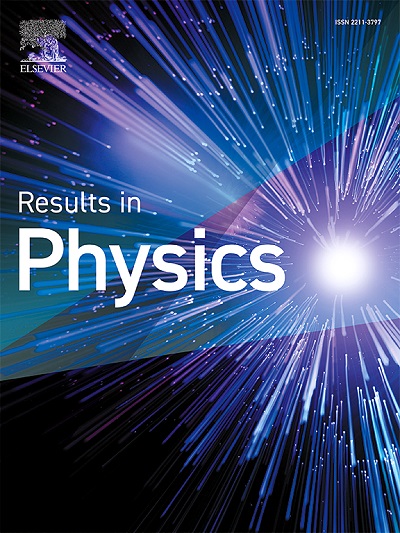基于Mach-Zehnder干涉仪和GSST相变材料定向耦合器的高性能全光光子晶体突触
IF 4.6
2区 物理与天体物理
Q2 MATERIALS SCIENCE, MULTIDISCIPLINARY
引用次数: 0
摘要
本文提出了一种新的全光光子晶体结构,利用马赫-曾德尔干涉仪和定向耦合器的集成来实现先进的光学神经形态突触。利用光子晶体和锗锑硒碲(GSST)相变材料,实现了对光传输的精确控制。与传统的硅光子学相比,光子晶体的使用使器件体积更小,大大减小了器件尺寸,为光学神经形态系统实现更高的集成密度提供了关键优势。综合时域有限差分(FDTD)仿真表明,在输入端加入光子晶体腔可以显著提高单模工作效率,使输出信号的传输率超过99%。此外,相变材料(PCM)棒的结晶度变化会显著影响输出信号的传输,从而实现对信号动力学的精确控制。在非晶和全晶条件下,GSST-PCM棒的信号传输速率在−0.02 dB和−13.5 dB之间变化,突出了相态变化对系统性能的深远影响。这种创新的光子晶体平台为实现下一代光突触提供了一条有前途的途径,为先进的光神经网络和机器学习铺平了道路。本文章由计算机程序翻译,如有差异,请以英文原文为准。
High-performance all-optical photonic crystal synapse based on Mach-Zehnder interferometer and directional coupler utilizing GSST phase-change material
This paper presents a novel architecture for all-optical photonic crystals, leveraging the integration of Mach-Zehnder interferometers and directional couplers for advanced optical neuromorphic synapses. By utilizing photonic crystals and germanium-antimony-selenium-tellurium (GSST) phase-change materials, we achieve precise control over optical transmission. The use of photonic crystals enables a compact footprint and significantly reduces the device size compared to conventional silicon photonics, offering a key advantage in achieving higher integration density for optical neuromorphic systems. Comprehensive finite-difference time-domain (FDTD) simulations demonstrate that incorporating a photonic crystal cavity at the input port significantly enhances single-mode operation, leading to an output signal transmission of more than 99 %. Furthermore, variations in the crystallinity fraction of phase-change material (PCM) rods significantly influence the output signal transmission, enabling precise control of the signal dynamics. Under amorphous and fully crystalline conditions of the GSST-PCM rods, the signal transmission rate varies between −0.02 dB and −13.5 dB, highlighting the profound impact of phase-state changes on system performance. This innovative photonic crystal platform offers a promising avenue for the realization of next-generation optical synapses, paving the way for advanced optical neural networks and machine learning.
求助全文
通过发布文献求助,成功后即可免费获取论文全文。
去求助
来源期刊

Results in Physics
MATERIALS SCIENCE, MULTIDISCIPLINARYPHYSIC-PHYSICS, MULTIDISCIPLINARY
CiteScore
8.70
自引率
9.40%
发文量
754
审稿时长
50 days
期刊介绍:
Results in Physics is an open access journal offering authors the opportunity to publish in all fundamental and interdisciplinary areas of physics, materials science, and applied physics. Papers of a theoretical, computational, and experimental nature are all welcome. Results in Physics accepts papers that are scientifically sound, technically correct and provide valuable new knowledge to the physics community. Topics such as three-dimensional flow and magnetohydrodynamics are not within the scope of Results in Physics.
Results in Physics welcomes three types of papers:
1. Full research papers
2. Microarticles: very short papers, no longer than two pages. They may consist of a single, but well-described piece of information, such as:
- Data and/or a plot plus a description
- Description of a new method or instrumentation
- Negative results
- Concept or design study
3. Letters to the Editor: Letters discussing a recent article published in Results in Physics are welcome. These are objective, constructive, or educational critiques of papers published in Results in Physics. Accepted letters will be sent to the author of the original paper for a response. Each letter and response is published together. Letters should be received within 8 weeks of the article''s publication. They should not exceed 750 words of text and 10 references.
 求助内容:
求助内容: 应助结果提醒方式:
应助结果提醒方式:


